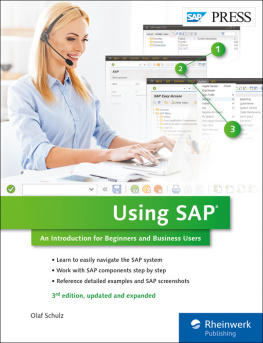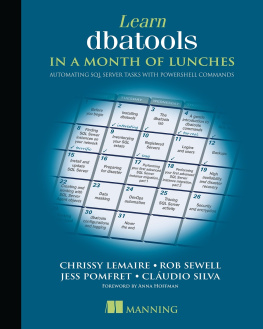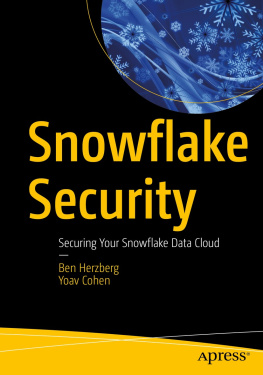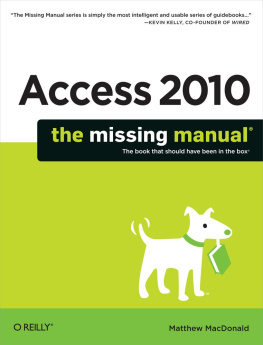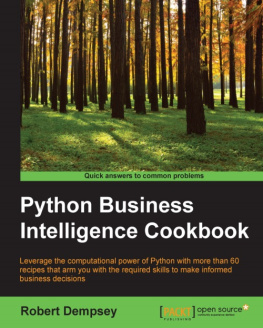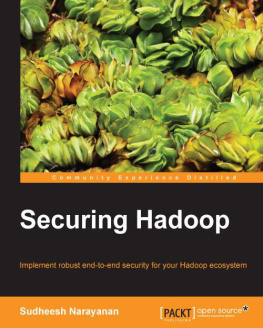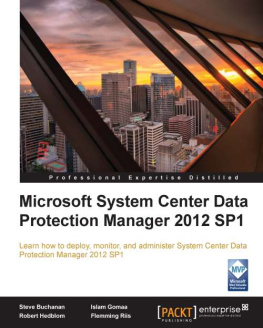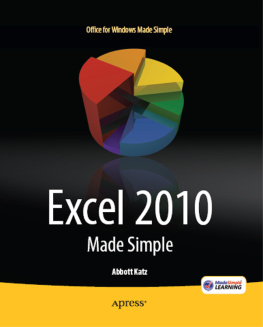This e-book is protected by copyright . By purchasing this e-book, you have agreed to accept and adhere to the copyrights. You are entitled to use this e-book for personal purposes. You may print and copy it, too, but also only for personal use. Sharing an electronic or printed copy with others, however, is not permitted, neither as a whole nor in parts. Of course, making them available on the Internet or in a company network is illegal as well.
For detailed and legally binding usage conditions, please refer to the section .
This e-book copy contains a digital watermark , a signature that indicates which person may use this copy:
You are reading this e-book in a file format (EPUB or Mobi) that makes the book content adaptable to the display options of your reading device and to your personal needs. Thats a great thing; but unfortunately not every device displays the content in the same way and the rendering of features such as pictures and tables or hyphenation can lead to difficulties. This e-book was optimized for the presentation on as many common reading devices as possible.
If you want to zoom in on a figure (especially in iBooks on the iPad), tap the respective figure once. By tapping once again, you return to the previous screen. You can find more recommendations on the customization of the screen layout on the .
About This Book
This book is aimed at anyone who wants to become familiar with the SAP system or get an overview of the most important functions and components. Well describe the software, how you navigate in the SAP system, and which central functions are available for the various business areaslogistics, accounting, and human resources.
If youre already familiar with the SAP system and want to specialize in one of the various SAP components, or if youre looking for detailed information, this book is probably not the best resource for you. In this case, you should refer to a book that deals with your specific field of interest at www.sap-press.com .
Structure of the Book
The book is divided into 3 parts and 20 chapters:
Part I outlines the history of the SAP enterprise and provides an overview of its products and special features.
, Brief History of the SAP Enterprise, describes the history of SAP SE from its foundation to the present.
In , How Does SAP Software Work?, you learn how to adapt the software to the requirements and needs of enterprises.
, Overview of the Most Critical SAP Products, provides an overview of the products of SAP Business Suitethat is, SAP ERP, SAP Supply Chain Management (SAP SCM), SAP Product Lifecycle Management (SAP PLM), and SAP Supplier Relationship Management (SAP SRM).
Part II forms the centerpiece of this book. It explains step by step how you operate the SAP system.
, Organizational Structures and Master Data, illustrates the significance of master data for all business processes and how you can map the enterprise structure in SAP systems using organizational units.
, Logging On to the SAP System, describes how you establish a connection from a workplace computer to an SAP system.
, Navigating in the SAP System, discusses the navigation in the program interface.
, Maintaining the System Layout and User Data, shows you how to adapt the SAP system to your requirements.
, Creating Evaluations and Reports, deals with evaluating and reporting processes. The data stored in the SAP system are often used for evaluations, which then form the basis for the decision-making process in the enterprise.
, Printing, describes the print process in the SAP system, how to print documents, and the creation of screenshots from the SAP system.
, Automating Tasks, teaches you how to have the SAP system work for you by automating tasks via batch jobs.
, Working with Messages and Business Workplace, shows you how to use the SAP system to perform different office administration tasks. The Business Workplace enables you to send messages, manage documents, and deploy workflows.
, Electronic Data Exchange, explains how you can use Electronic Data Interchange (EDI) to transfer data to other systems seamlessly.
, Using Help Functions, describes the different help functions: the SAP online help, the (F1) and (F4) help, and many more.
, The Role and Authorization Concept, provides general information on authorization control and the role concept in SAP ERP.
Part III of this book provides an overview of the most critical business processes in the SAP system.
In , Materials Management, you learn how purchasing processes are mapped in the Materials Management (MM) component in the SAP ERP system. The chapter provides information on the required master data, the organizational structures, and the procurement process, including purchase order, goods receipt, and invoice verification.

